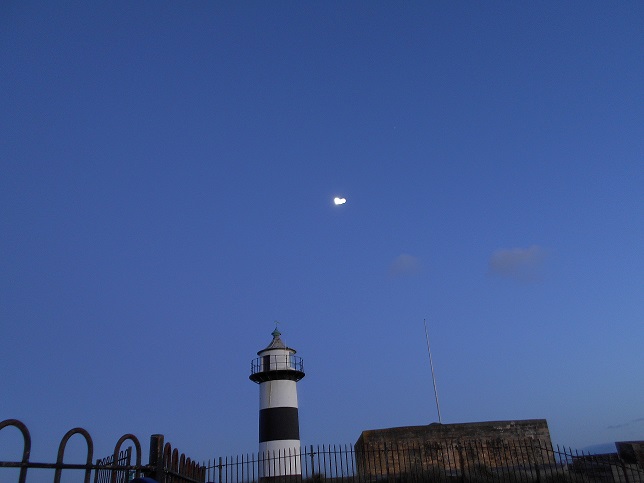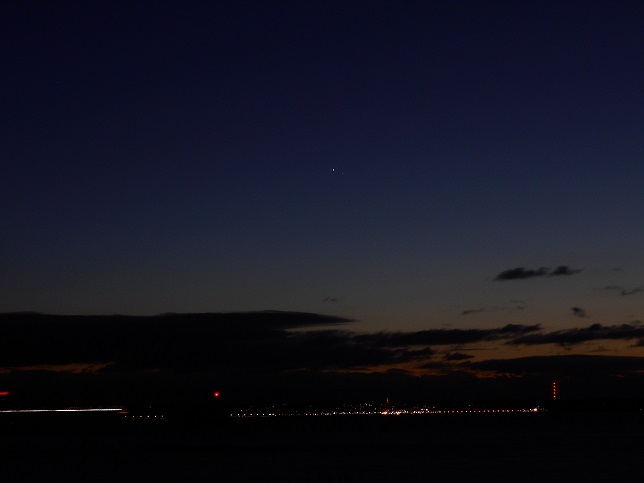It has taken 40 years to prove that Δs = e2π (change in distance from galaxy image towards black hole = the exponential function of two pi)? 😱Some stuff on black holes
Danish student solves decades long mystery regarding light and black holes
Steve would have proved it in 40 minutes - or at least would have claimed he had! 😀
Using the Event Horizon Telescope (the same telescope used to capture the first-ever image of a black hole in distant galaxy Messier 87) astronomers are currently working toward capturing the first image of the Milky Way’s black hole, Sagittarius A*.
We know there is a supermassive black hole at the centre of our galaxy because we can see stars orbiting around it. For example, star S2, which we discussed earlier in the thread, is on a 16-year elliptical orbit around the black hole. However, we've never seen the black hole directly.
Why, you may ask, can we directly observe the supermassive black hole in the centre of M87 and 55 million light years from Earth, but can't yet directly observe the black hole at the centre of our own Milky Way galaxy and a mere 27,000 light years away?
All is reveaked here: When will we see the Milky Way's black hole? Why 2021 is an exciting year
We know there is a supermassive black hole at the centre of our galaxy because we can see stars orbiting around it. For example, star S2, which we discussed earlier in the thread, is on a 16-year elliptical orbit around the black hole. However, we've never seen the black hole directly.
Why, you may ask, can we directly observe the supermassive black hole in the centre of M87 and 55 million light years from Earth, but can't yet directly observe the black hole at the centre of our own Milky Way galaxy and a mere 27,000 light years away?
All is reveaked here: When will we see the Milky Way's black hole? Why 2021 is an exciting year
Attachments
Because operational nuclear power plants rely on a cooling system, and water is a great coolant, they must be located along rivers or coasts where the water is plentiful and free."Err, well...let's just build it on the ocean coastline. That way if there is a meltdown we have plenty of cooling capacity"!
The attached map shows the locations of nuclear power plants on this side of the pond, and their operational status.
You can click on the individual plants and display their full details in this interactive version of the attached map: European Atlas of the Seas
Attachments
Yes, I'm well aware. The point was the forest for the trees. On the coast is bad enough. They set it up for disaster.
IDIOTS!
IDIOTS!
This is not specific to nuclear plants. Any thermal plant needs cooling whatever fuel is used ( coal, gaz, gazole ) to convert heat into mechanical energy.Because operational nuclear power plants rely on a cooling system, and water is a great coolant, they must be located along rivers or coasts where the water is plentiful and free.
The cooling towers that scare so much have nothing nuclear.
The nuclear part of the plant is just the boiler, all the rest is conventional.
The need of water to cool the reactor is another story, dramatic when things go wrong.
In normal operation the cooling of the reactor is from the heat transfer to the steam turbine that runs the alternator.
It is wise to have on hands heavy cooling means in case things go wrong. Not only water but pumps and generators to run them when you are out of the grid. All that, better not be swamped by a tsunami.
I do not understand the map. It does not show nuclear plants inland on large rivers: Loire, Rhone, Seine.
Last edited:
The map shows only coastal locations.I do not understand the map. It does not show nuclear plants inland on large rivers: Loire, Rhone, Seine.
The link I gave to the interactive European Atlas of the Seas doesn't give access to the interactive map of coastal nuclear plants.
It may be accessed via this link: Map of the week – Coastal Nuclear Power Plants | European Marine Observation and Data Network (EMODnet)
It may be accessed via this link: Map of the week – Coastal Nuclear Power Plants | European Marine Observation and Data Network (EMODnet)
I have investigated Albert Snepppen's fine paper on Black Holes.
Danish student solves decades long mystery regarding light and black holes
It was originally in Danish, but close enough to Norwegian for me to follow. The real curiosity was how anyone can have 3p's in their name. It was a misprint: which may haunt him when his Nobel Prize is engraved.
Author Correction: Divergent reflections around the photon sphere of a black hole | Scientific Reports
What he is saying, is that a spinning Black Hole creates a very strange image indeed. As you recall, my sister said the Moon was a funny shape on Christmas Eve last year. I dismissed as the ramblings of a Madwoman. 😀
But checked my photographs taken that night:

Clearly a Spinning Black Hole passed between the Moon and Earth that night. And I found the first observational evidence! Historians will remember the system7-Snepppen Effect alongside Hawking Radiation. 🙂
Danish student solves decades long mystery regarding light and black holes
It was originally in Danish, but close enough to Norwegian for me to follow. The real curiosity was how anyone can have 3p's in their name. It was a misprint: which may haunt him when his Nobel Prize is engraved.
Author Correction: Divergent reflections around the photon sphere of a black hole | Scientific Reports
What he is saying, is that a spinning Black Hole creates a very strange image indeed. As you recall, my sister said the Moon was a funny shape on Christmas Eve last year. I dismissed as the ramblings of a Madwoman. 😀
But checked my photographs taken that night:
Clearly a Spinning Black Hole passed between the Moon and Earth that night. And I found the first observational evidence! Historians will remember the system7-Snepppen Effect alongside Hawking Radiation. 🙂
@ Steve - That was the "Christmas Star" of 2020, but it was best viewed on Dec 21st.
The conjunction of Jupiter and Saturn - no black hole involved of course!
The conjunction of Jupiter and Saturn - no black hole involved of course!
It's been windy here!😉
How mcchambin laughs at our British "windmills"! Preferring his Atomic Waste. Have I shown you the effect of his Gamma Rays on my Geraniums? Below. They used to be a 6" high pot plant on my window shelf... 😱
I am well aware of the movement of the Planets. Cue the Christmas Star taken on Dec 24th.. One of my finer moments.

You'd think I know the difference between a couple of boring Planets and a Black Hole!

I am well aware of the movement of the Planets. Cue the Christmas Star taken on Dec 24th.. One of my finer moments.
You'd think I know the difference between a couple of boring Planets and a Black Hole!
Attachments
Probably, but with the countless number of galaxies in just the observable universe, who can say for certain?
The formation of supermassive black holes is an area of active research.
Galaxy formation is a topic worth researching and I realise that there's lots of new knowledge that I need to catch up on.
So far, I've learned that the oldest galaxies are the huge elliptical galaxies which have formed over the eons through a series of collisions involving smaller spiral galaxies. Elliptical galaxies have supermassive black holes at their centres.
Small 'dwarf' galaxies do not have black holes at their centres.
Not all supermassive black holes at the heart of galaxies are active. Some, like the one at the centre of our galaxy, have run out of stars to consume and are currently 'slumbering'.
Quasars are very distant but very bright galaxies. Their great distance means they were formed very early in the history of the universe. These young galaxies are (were?)powered by supermassive black holes at their centres which voraciously consume matter which emits energy is it spirals to its destruction.
I'm writing this from memory, so there may be inaccuracies!
Galaxy formation is a topic worth researching and I realise that there's lots of new knowledge that I need to catch up on.
So far, I've learned that the oldest galaxies are the huge elliptical galaxies which have formed over the eons through a series of collisions involving smaller spiral galaxies. Elliptical galaxies have supermassive black holes at their centres.
Small 'dwarf' galaxies do not have black holes at their centres.
Not all supermassive black holes at the heart of galaxies are active. Some, like the one at the centre of our galaxy, have run out of stars to consume and are currently 'slumbering'.
Quasars are very distant but very bright galaxies. Their great distance means they were formed very early in the history of the universe. These young galaxies are (were?)powered by supermassive black holes at their centres which voraciously consume matter which emits energy is it spirals to its destruction.
I'm writing this from memory, so there may be inaccuracies!
You mean those in close proximity? Is it not the black hole itself that forms the galaxy? Given enough time, does a galaxy become just a black hole?have run out of stars to consume and are currently 'slumbering'.
[QUOTE
Fascinating. I've never seen a pig brown up onions and mushrooms, mash potatoes or plate them and smother them in gravy. Do you have pictures of their breakfasts?
That looks like a Pig's breakfast, MITsound!
"tanquam ex ungue leonem"... 🙂
Fascinating. I've never seen a pig brown up onions and mushrooms, mash potatoes or plate them and smother them in gravy. Do you have pictures of their breakfasts?
I remember seeing an episode where Seinfeld was chiding Kramer on his idea of over drying clothes. He stated to the effect that once a shirt is dry, that's it. It doesn't become more dry.
On the subject of super massive black holes and gravity, is there a point reached where it cannot attract more, on a local level relative to itself?
Would that be where matter and energy is ejected into another dimension?
On the subject of super massive black holes and gravity, is there a point reached where it cannot attract more, on a local level relative to itself?
Would that be where matter and energy is ejected into another dimension?
- Status
- Not open for further replies.
- Home
- Member Areas
- The Lounge
- What is the Universe expanding into..



